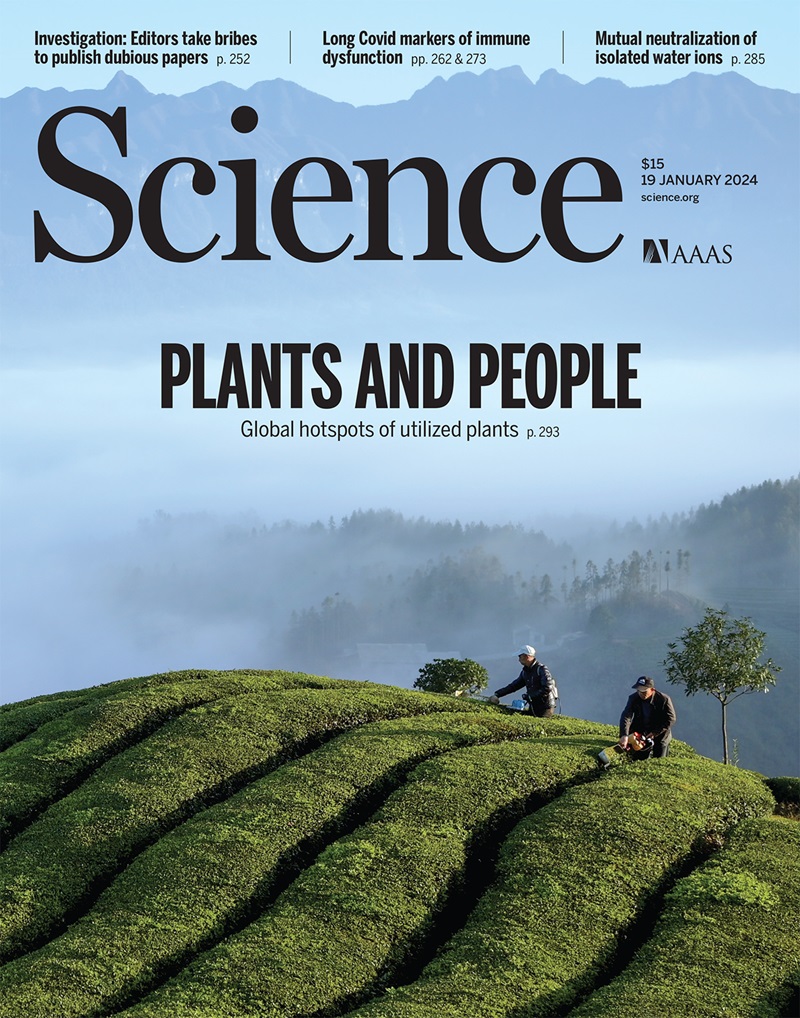Aberrant basal cell clonal dynamics shape early lung carcinogenesis
IF 44.7
1区 综合性期刊
Q1 MULTIDISCIPLINARY SCIENCES
引用次数: 0
Abstract
Preinvasive squamous lung lesions are precursors of lung squamous cell carcinoma (LUSC). The cellular events underlying lesion formation are unknown. Using a carcinogen-induced model of LUSC with no added genetic hits or cell type bias, we find that carcinogen exposure leads to non-neutral competition among basal cells, aberrant clonal expansions, and basal cell mobilization along the airways. Ultimately, preinvasive lesions develop from a few highly mutated clones that dominate most of the bronchial tree. Multi-site sequencing in human patients confirms the presence of clonally related preinvasive lesions across distinct airway regions. Our work identifies a transition in basal cell clonal dynamics, and an associated shift in basal cell fate, as drivers of field cancerization in the lung.异常基底细胞克隆动力学影响早期肺癌的发生
肺浸润前鳞状病变是肺鳞状细胞癌(LUSC)的前兆。病变形成背后的细胞事件尚不清楚。我们使用了一个没有添加基因撞击或细胞类型偏倚的致癌物质诱导的LUSC模型,发现致癌物质暴露导致基底细胞之间的非中性竞争、异常克隆扩增和基底细胞沿气道的动员。最终,侵袭前病变由几个高度突变的克隆发展而来,这些克隆主宰了大部分支气管树。人类患者的多位点测序证实了在不同气道区域存在克隆相关的侵袭前病变。我们的工作确定了基底细胞克隆动力学的转变,以及基底细胞命运的相关转变,作为肺场癌的驱动因素。
本文章由计算机程序翻译,如有差异,请以英文原文为准。
求助全文
约1分钟内获得全文
求助全文
来源期刊

Science
综合性期刊-综合性期刊
CiteScore
61.10
自引率
0.90%
发文量
0
审稿时长
2.1 months
期刊介绍:
Science is a leading outlet for scientific news, commentary, and cutting-edge research. Through its print and online incarnations, Science reaches an estimated worldwide readership of more than one million. Science’s authorship is global too, and its articles consistently rank among the world's most cited research.
Science serves as a forum for discussion of important issues related to the advancement of science by publishing material on which a consensus has been reached as well as including the presentation of minority or conflicting points of view. Accordingly, all articles published in Science—including editorials, news and comment, and book reviews—are signed and reflect the individual views of the authors and not official points of view adopted by AAAS or the institutions with which the authors are affiliated.
Science seeks to publish those papers that are most influential in their fields or across fields and that will significantly advance scientific understanding. Selected papers should present novel and broadly important data, syntheses, or concepts. They should merit recognition by the wider scientific community and general public provided by publication in Science, beyond that provided by specialty journals. Science welcomes submissions from all fields of science and from any source. The editors are committed to the prompt evaluation and publication of submitted papers while upholding high standards that support reproducibility of published research. Science is published weekly; selected papers are published online ahead of print.
 求助内容:
求助内容: 应助结果提醒方式:
应助结果提醒方式:


